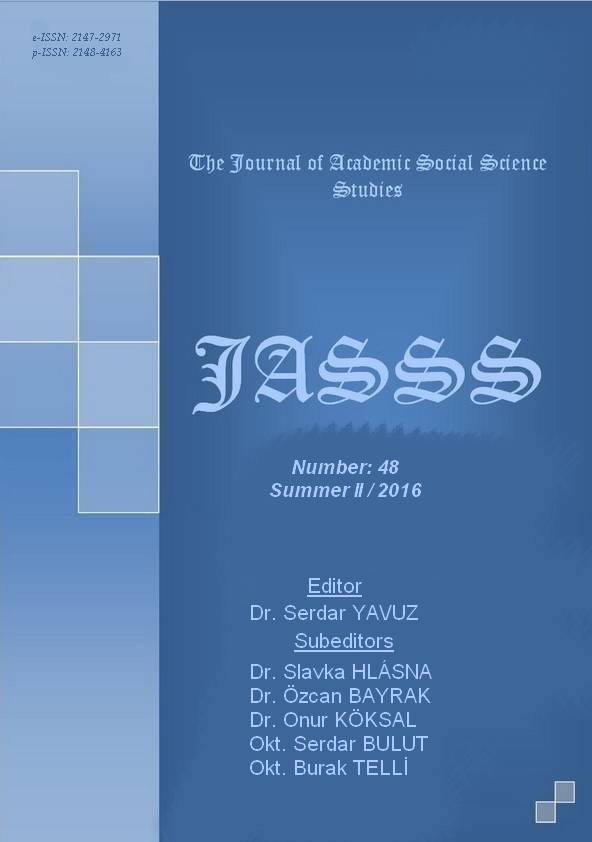Author :
Abstract
Türkmenistan alan araştırmasının sonuçlarını içeren bu çalışmada, oldukça etkin ve önemli bir sanat ve zanaat dalı olan kuyumculuğun, estetik ve formalist yönünden ziyade, sosyo-iktisadi ve sosyo-kültürel yönü ile ele alınmış, bu bağlamda ile analiz ve değerlendirmelere tabi tutularak, eski Türk kültüründeki ve günümüz Türkmenistan’ındaki yeri ve önemi ortaya konmaya çalışılmıştır. Nitekim Orta Asya coğrafyasında, eski tarihlerden günümüze kadar kuyumculuk mesleği ata mesleği olarak muhafazakar yapısını koruyan nadir sanat ve zanaat dallarından biri olarak, kültürel yaşamın ve iktisadi ortamın temel belirleyicilerinden biri olmuştur. Dolayısıyla önemini eski tarihlerden beri koruyan zerger adı verilen bu meslek erbapları, toplum içerisinde tanınan, itibar ve saygı gören kişilerin başında gelmektedir. Bu da kuyumculukla alakalı zengin bir terminolojinin, derin bir ikonografinin mevcudiyetini gündeme getirmiş, edebiyattan, sanata, geleneklerden, kültürel yapıya derin bir nüfuzu kaçınılmaz kılmıştır.
Keywords
Abstract
This study which contains the outcomes of the fieldwork conducted in Turkmenistan, socio-economic aspect, rather than aesthetic and formalist aspects of art and craft of jewellery that’s being an important and effective art and craft branch, have been examined, in this juncture through various analysis, their place and importance in past and present Turkmen culture has been put forward. Thus, the art of jewellery in Central Asia, from ancient times to date as one of the professions of the ancestors by preserving its conservative structure has become a determinant of the cultural life and economic environment. It is therefore, veneered from ancient times to date connoisseurs of this profession called “zerger” are well respected and dignified members of their societies. This in turn has created a rich jewellery terminology and profound iconography and domination infusion of jewellery from art to literature, tradition and the whole cultural structure has become inevitable.





